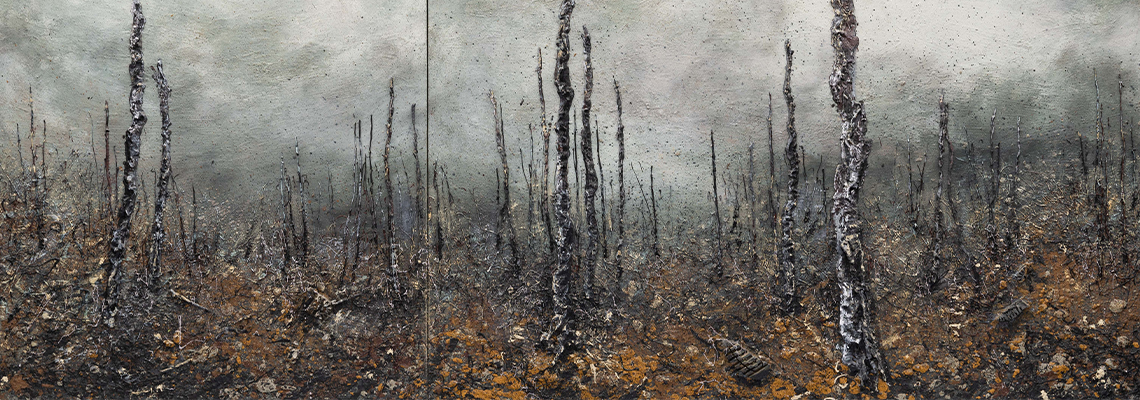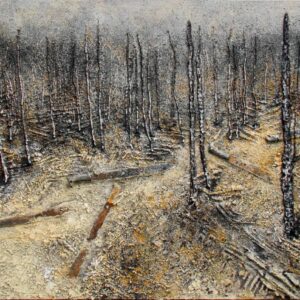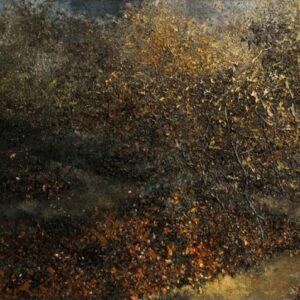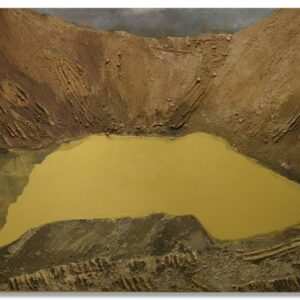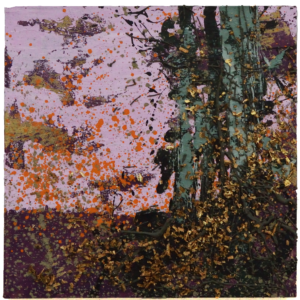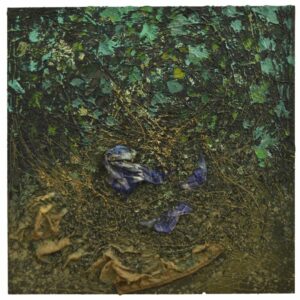With work that invokes a surreal expanse of reality, the artist uses a mix of organic mediums, from earth and sand to ash and rubber, he produces art that is tangible and touchable. Each work is an expression of bodily involvement; the rawness of the edges and images intimates the viewer with the artist, as he or she can define the labor that the piece involves.
By manipulating texture, Bedoya is able to communicate his vision of a landscape in transition. The other-worldliness of his paintings reflect a more substantial claim against the way man’s hands alter and extort the face of nature in the name of industrialization. John J. Bedoya’s work documents the natural landscape as it is altered by mankind.
Using a combination of organic (earth, sand, ashes) and man-made (coins, rubber soles, machetes) materials—as well as matter that exists on the threshold between those classifications—he manipulates and bends his mediums into textures that are at the same time imitative of physical landscapes and entirely foreign environments.
In his early works Bedoya communicates a natural state in transition. He documents the New England winter he encountered upon arriving in the United States in February 2015. Hours before, he had been in Colombia’s tropical paradise: the lush greens, tree limbs and pillowy fruits and flowers starkly contrasted Connecticut’s barren, white environment. In the dead of winter, he watched the world succumb to the frozen ground, producing an alien landscape, which surprisingly, became recognizable with spring’s arrival only weeks later. Filled with the need to articulate this unique experience, Bedoya used his work to evoke nature’s ephemerality.
Most recently, influenced by the Colombian Free Trade Agreement, Bedoya has begun to incorporate Monsanto-grown rice and product into his work, documenting the practice of genetically modified agriculture in developing nations. These pieces reflect the problems caused by industrial agriculture in countries where large-scale plantations of a single species replace manpower and agricultural tradition with specialized machines and techniques.

